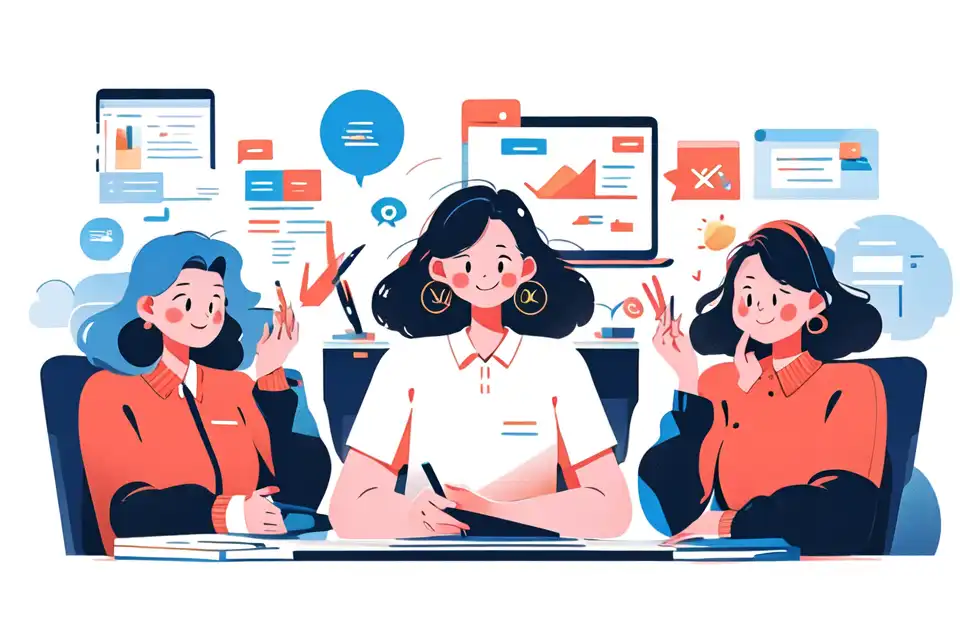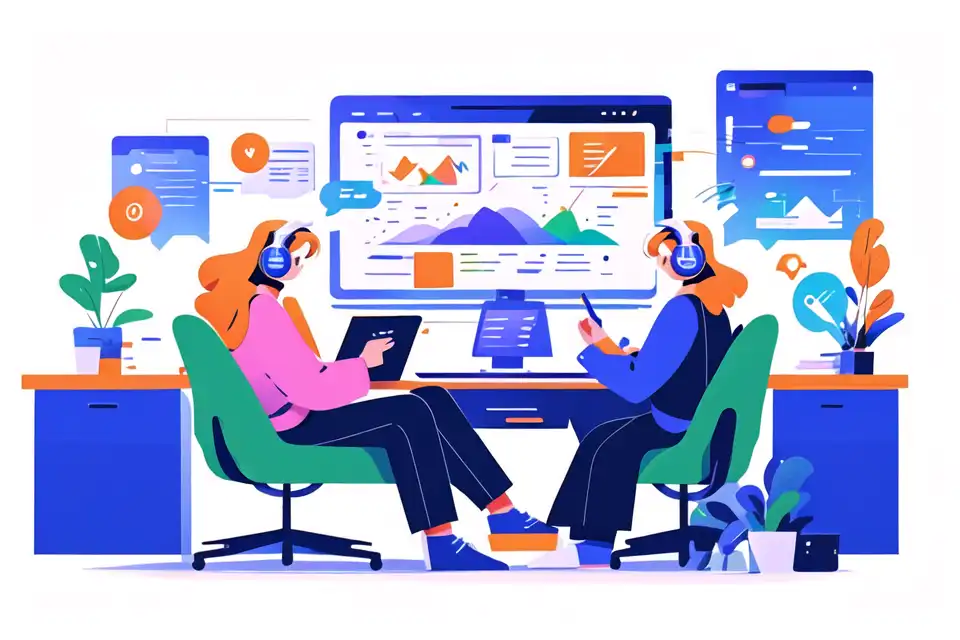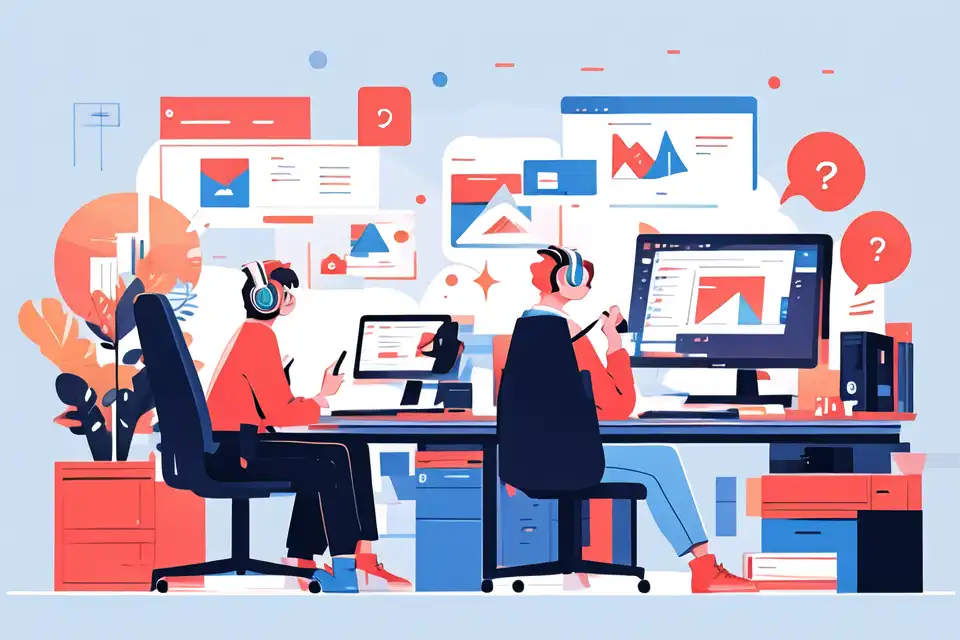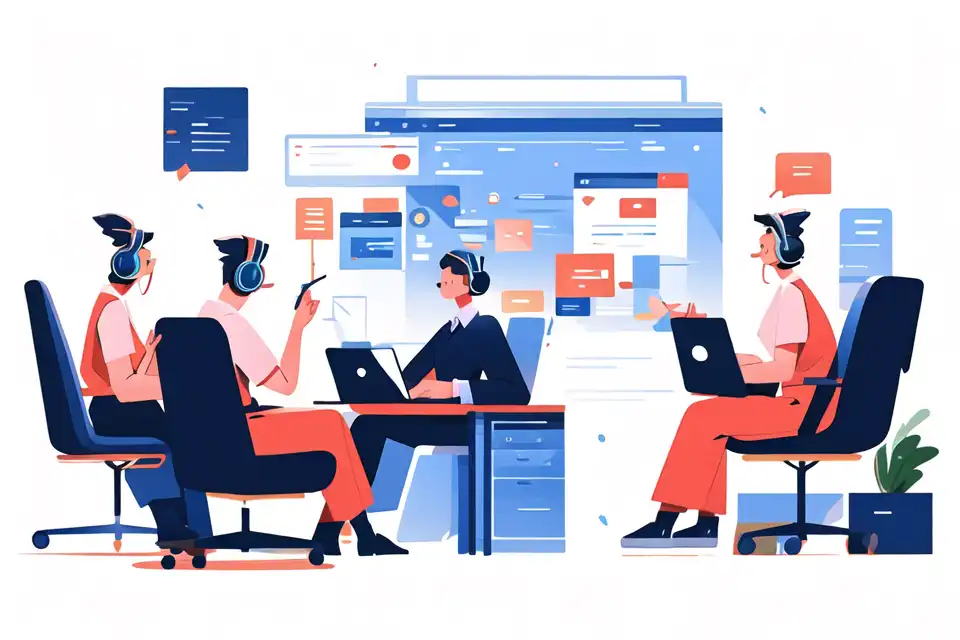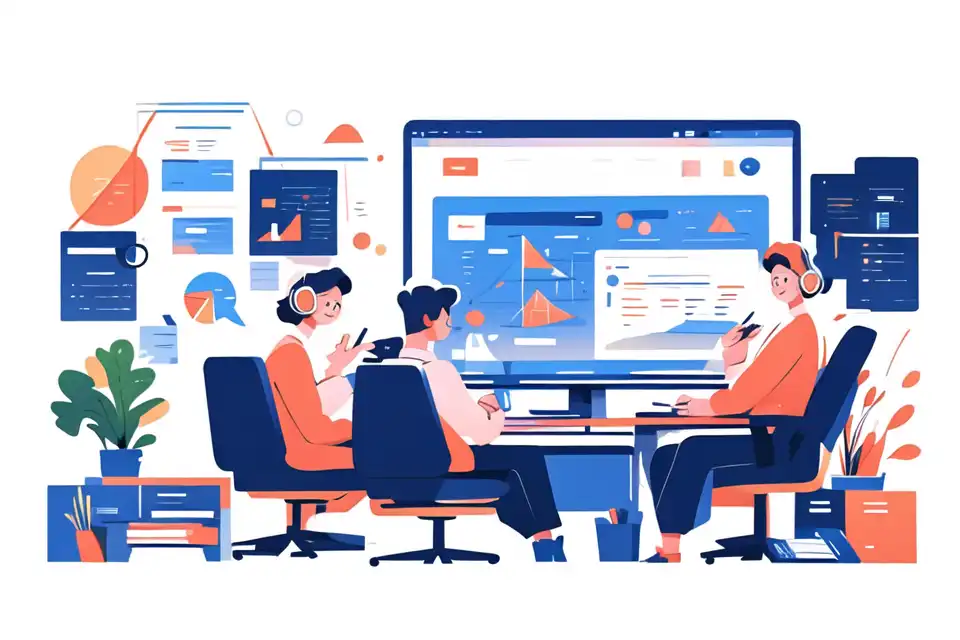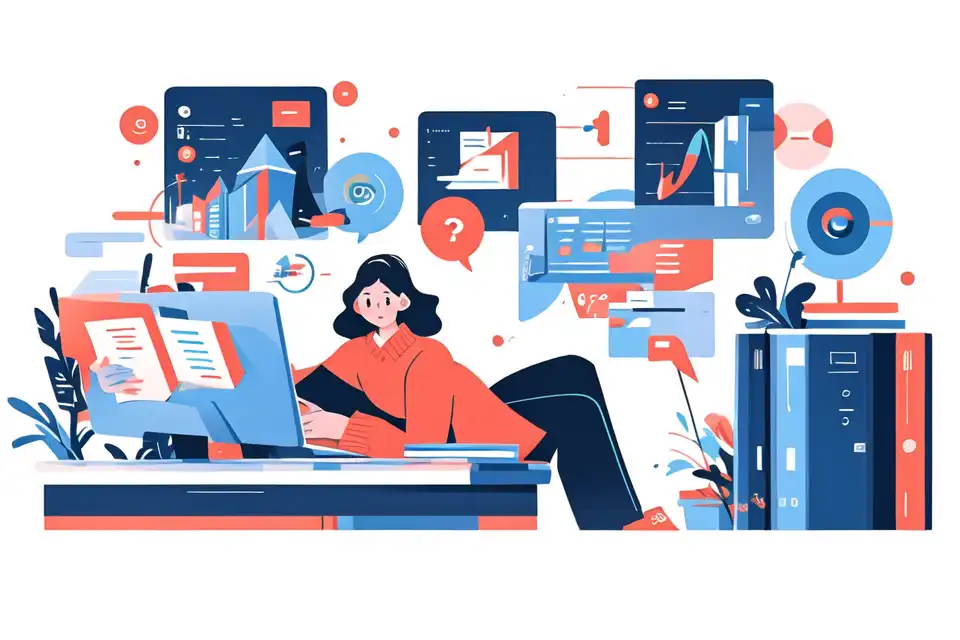Virtual Reality In Education
Learn about the top tips and strategies in virtual reality in education
Try Lark for Free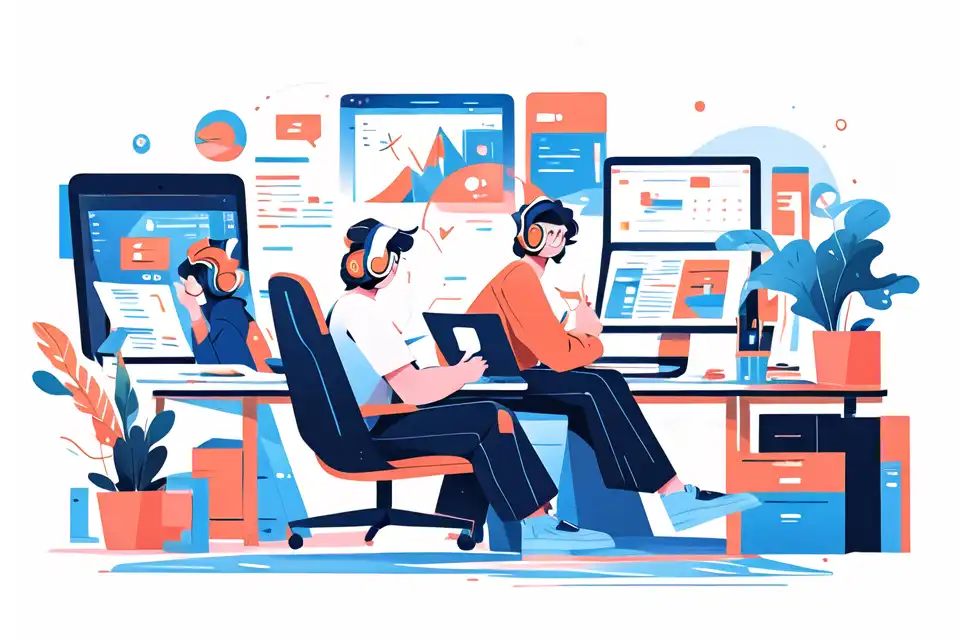
An Overview of Virtual Reality in Education
Welcome to the world of modern education, where traditional blackboards and textbooks are gradually making way for innovative technology like Virtual Reality (VR). This immersive technology allows students to engage in a three-dimensional, interactive environment, providing a whole new dimension to learning. From virtual field trips to interactive science labs, VR is transforming the way students learn and interact with educational content.
Importance of Virtual Reality in Modern Learning Environments
VR is not just a tech gimmick; it's an effective educational tool that enhances students' understanding and retention of complex concepts. By visualizing abstract ideas and immersing learners in interactive experiences, VR makes education more engaging and impactful. With VR, educators can create unique, experiential learning environments that cater to different learning styles, thus promoting inclusivity in education.
Interesting Trends and Statistics on VR in Education
To underscore the growing relevance of VR in education, let's consider some numbers. According to a report by eLearning Industry, VR in education is expected to grow by 59% annually until 2022. Another report by Technavio predicts that the VR in education market will grow by $6.34 billion during 2020-2024. These figures reflect the increasing acceptance and adoption of VR in the educational sector.
Unlock the power of Lark to elevate your business operations. Discover actionable strategies and best practices in our comprehensive guide.
Exploring the benefits of virtual reality in education
Enhancing Teaching and Learning through VR
One of the key benefits of VR in education is its potential to enhance teaching and learning processes. With VR, complex scientific phenomena or historical events can be demonstrated in an immersive, 3D format, making learning more engaging and intuitive. This can lead to improved comprehension and retention of knowledge compared to traditional teaching methods.
Impact of Virtual Reality on Student Engagement and Learning Outcomes
VR not only transforms teaching methods but also significantly impacts student engagement and learning outcomes. By providing an interactive, immersive learning experience, VR stimulates students' curiosity and interest, leading to higher engagement. Research suggests that such active involvement in learning can lead to improved learning outcomes.
Implementation of virtual reality in education
Steps to Integrate Virtual Reality into the Classroom or Curriculum
Integrating VR into a classroom or curriculum involves a structured approach. It begins with identifying the learning objectives and how VR can enhance them. This is followed by selecting appropriate VR tools and content, based on the students' age and curriculum requirements. Training educators to use VR tools effectively and creating a safe and conducive VR learning environment are other crucial steps.
Essential Tools and Resources for Virtual Reality in Education
Implementing VR in education requires certain tools and resources. These include hardware like VR headsets and controllers, educational VR content, and a robust platform to manage and deliver VR experiences. For instance, Lark provides a comprehensive platform for collaboration and communication, making it easier to manage and deliver VR content effectively in educational settings.
Learn more about Lark can help you with everything mentioned so far in the article.
Real-world applications: case studies and examples
Using vr to enhance science learning: a case study
Using vr to enhance science learning: a case study
Consider a high school biology class where students are learning about human anatomy. With traditional teaching methods, students have to rely on textbook diagrams or 2D models. Now, imagine the same class with VR. Students can virtually 'walk' through different parts of the human body, observing and interacting with each organ in a 3D format. This immersion and interactivity significantly enhance students' understanding and interest in the subject.
Vr in language learning: a success story
Vr in language learning: a success story
In another example, a language class used VR to enhance students' language skills. Instead of merely listening to audio clips or reading texts, students used VR to virtually visit different countries, interact with native speakers, and immerse themselves in the culture and lifestyle of the places whose language they were learning. This immersive, real-world experience significantly enhanced students' language skills and cultural understanding.
A practical example of virtual field trips through vr
A practical example of virtual field trips through vr
VR also enables virtual field trips, allowing students to explore different geographical locations, historical sites, or even outer space, from the comfort of their classrooms. For instance, a class studying Ancient Egypt can take a virtual tour of the Pyramids, experiencing the grandeur and intricacies of these structures, thereby making their learning experience more engaging and memorable.
Navigating challenges and finding solutions in vr education
Identifying Potential Obstacles when Adopting VR in Education
Adopting VR in education comes with its share of challenges. These include high initial investment, lack of quality educational VR content, technical glitches, and the need for training educators to use VR effectively. Additionally, concerns about students' safety and health, given the immersive nature of VR, are also prevalent.
Strategies to Overcome Challenges in VR Education
Overcoming these challenges requires a strategic approach. This includes choosing affordable, user-friendly VR tools, creating or sourcing high-quality educational VR content, providing technical support, and conducting regular training sessions for educators. Ensuring safety protocols, like frequent breaks during VR sessions, can address safety and health concerns. Tools like Lark can also provide effective solutions for managing and delivering VR content in an educational setting.
Learn more about Lark can help you with everything mentioned so far in the article.
The future of virtual reality in education
Emerging Trends in VR Education
The future of VR in education looks promising with several emerging trends. These include a greater emphasis on creating high-quality, curriculum-aligned VR content, the development of more affordable and user-friendly VR tools, and increased research on the pedagogical benefits of VR.
Predictions for VR's Role in Shaping Future Education
While it is difficult to make precise predictions, one thing is clear - VR is set to play a significant role in shaping future education. With continual advancements, VR could become a standard teaching tool, transforming classrooms into immersive, interactive learning environments.
Do's and don'ts of implementing vr in education
| Do's | Don'ts |
|---|---|
| Do start with a clear learning objective | Don't use VR for the sake of using technology |
| Do invest in quality VR content and tools | Don't overlook the need for training educators |
| Do ensure a safe and conducive VR learning environment | Don't ignore potential health and safety concerns |
Learn more about Lark can help you with everything mentioned so far in the article.
Conclusion: embracing virtual reality in education
Recap of the Significance of Virtual Reality in Education
In conclusion, VR is a transformative tool in modern education. By making learning more immersive, interactive, and engaging, it enhances teaching methods and improves learning outcomes. Despite the challenges, with the right strategies and tools, VR can be effectively integrated into classrooms, enhancing students' learning experiences and preparing them for the digital future.
Final Thoughts on the Future of VR in Education
Looking ahead, VR is set to play a significant role in shaping future education. While it may not entirely replace traditional teaching methods, it's likely to become an integral part of modern classrooms, revolutionizing the way students learn and interact with educational content. As we embrace this digital transformation in education, it's essential to ensure that the integration of technology like VR is done in a way that enhances learning while ensuring students' safety and wellbeing.
Unlock the power of Lark to elevate your business operations. Discover actionable strategies and best practices in our comprehensive guide.
